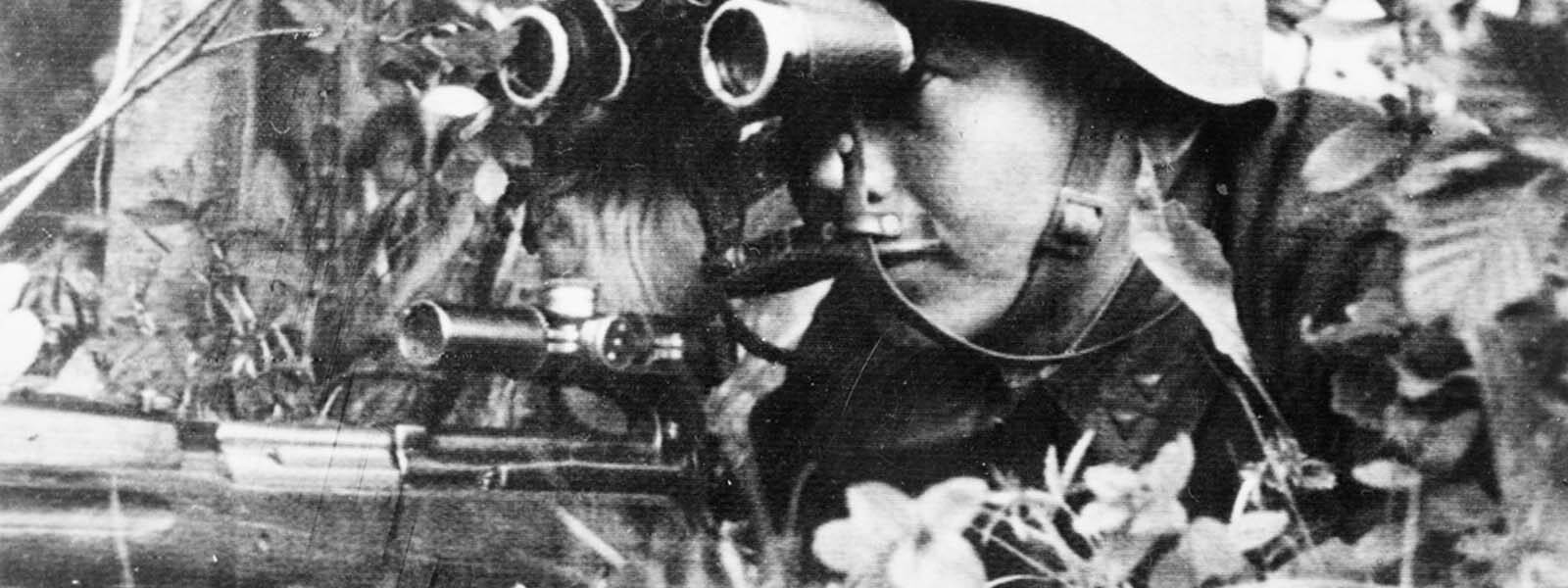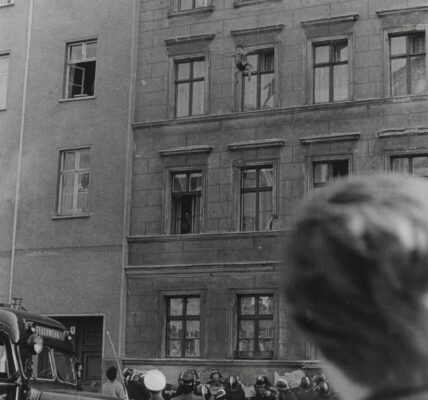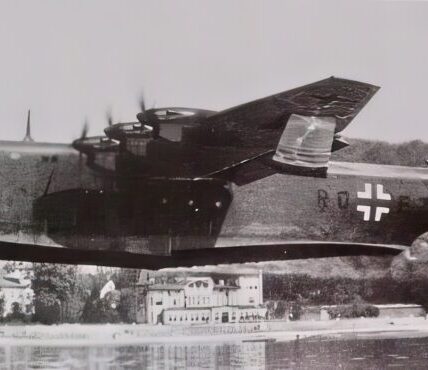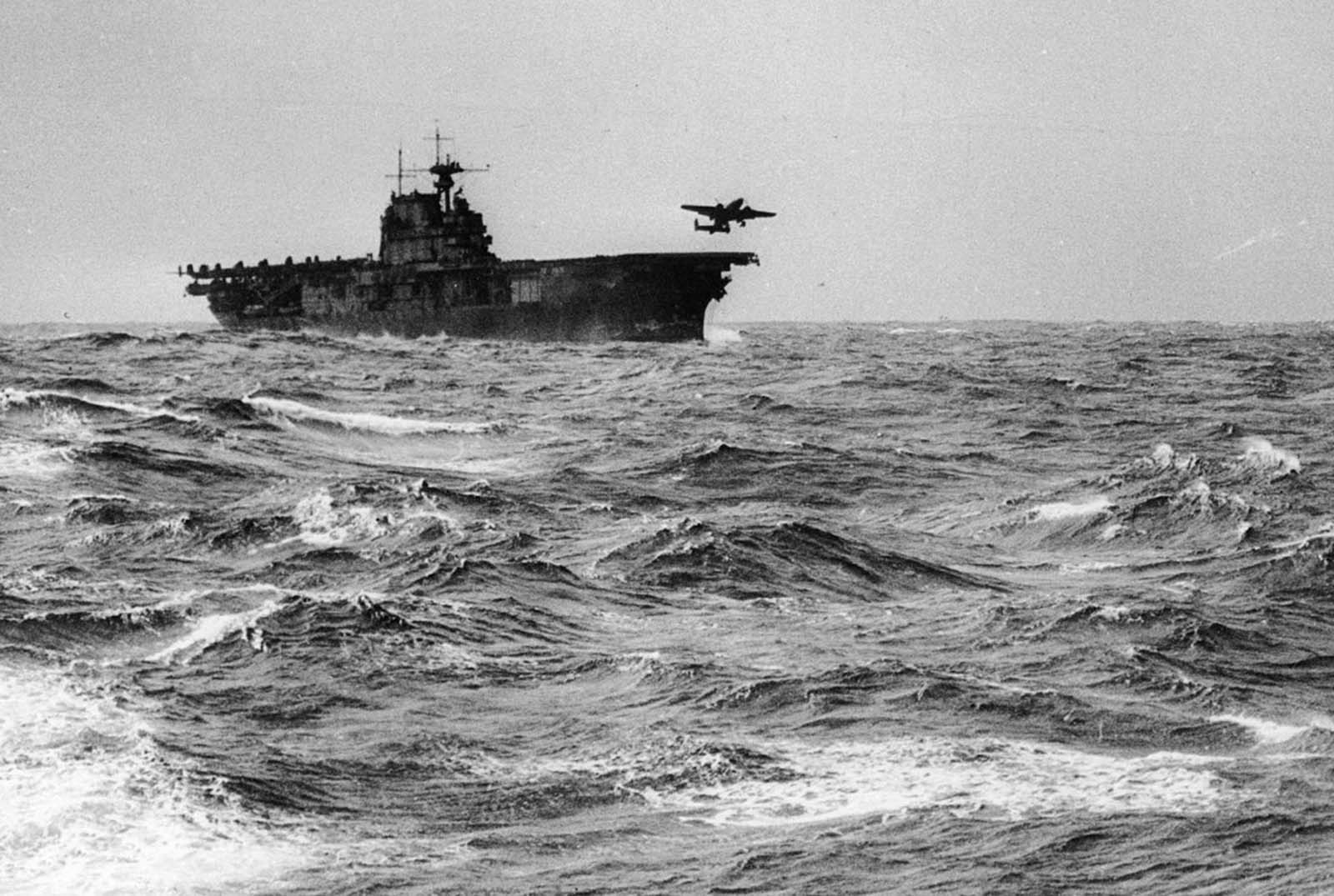
A U.S. Army Air Force B-25B Mitchell medium bomber, one of sixteen involved in the mission, takes off from the flight deck of the USS Hornet for an air raid on the Japanese Home Islands, on April 18, 1942. The attack, later known as the Doolittle Raid, inflicted limited damage, but gave a huge boost to American morale after the attacks on Pearl Harbor months earlier.
The events of 1942 were crucial in the way that World War Two played out. The first Americans arrived in England in January – ‘Overpaid, oversexed – and in North Africa Field Marshal Erwin Rommel’s Afrika Korps began their counter-offensive, capturing Tobruk in June.
The Blitz intensified in both England and Germany, with the first thousand-bomber air raid on Cologne, and the German bombing of British cathedral cities.
In the Pacific, the Japanese continued their expansion into Borneo, Java, and Sumatra. The ‘unassailable’ British fortress of Singapore fell rapidly in February, with around 25,000 prisoners taken, many of whom would die in Japanese camps in the years to follow.
But June saw the peak of Japanese expansion. The Battle of Midway, in which US sea-based aircraft destroyed four Japanese carriers and a cruiser, marked the turning point in the Pacific War.
The second half of the year also saw a reversal of German fortunes. British forces under Montgomery gained the initiative in North Africa at El Alamein, and Russian forces counterattacked at Stalingrad.
The news of mass murders of Jewish people by the Nazis reached the Allies, and the US pledged to avenge these crimes. In this article, you’ll find an amazing and rare photo collection of the raids of the Second World War.
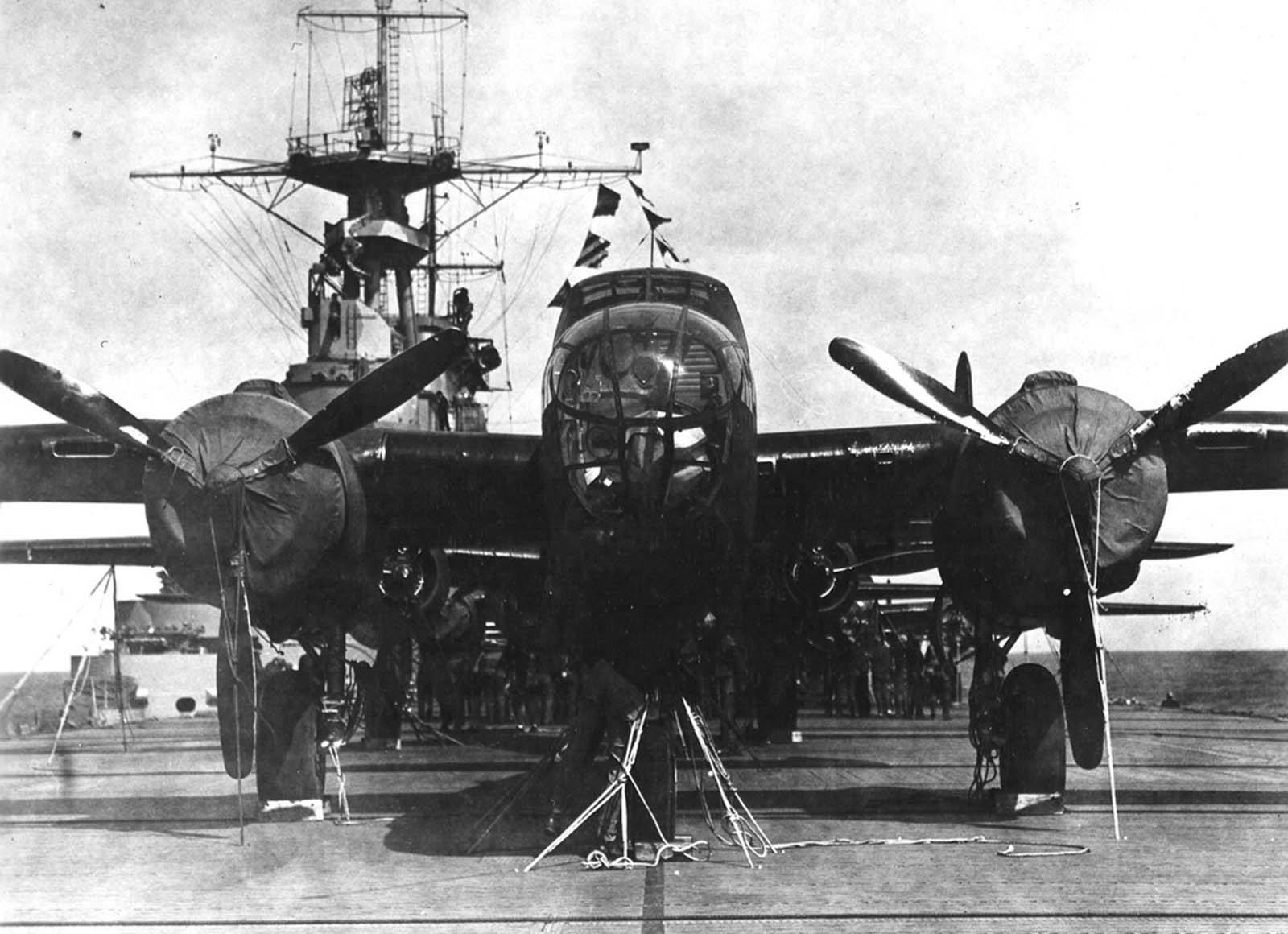
A crew member checks the lashings on his bomber aboard the USS Hornet, while behind him other crews check their planes in preparation for the Doolittle Raid on April 18, 1942.

Posing in front of a bomber is Crew No. 1 of the Doolittle Raid, from the 34th Bombardment Squadron, Lt. Col. James H. Doolittle, pilot (2nd from left); Lt. Richard E. Cole, co-pilot; Lt. Henry A. Potter, navigator; SSgt. Fred A. Braemer, bombardier; SSgt. Paul J. Leonard, flight engineer/gunner.

American B-25B bombers rest on the flight deck of the USS Hornet, approaching the spot where the planes were launched on their raid on Tokyo, April 13, 1942. Escort ship in left background.

A U.S. Army Air Force B-25B bomber leaves the deck of the USS Hornet, for the historic raid on Tokyo under Maj. Gen. James Doolittle, on April 18, 1942. Each aircraft carried three 500-pound high-explosive bombs and one incendiary bomb.
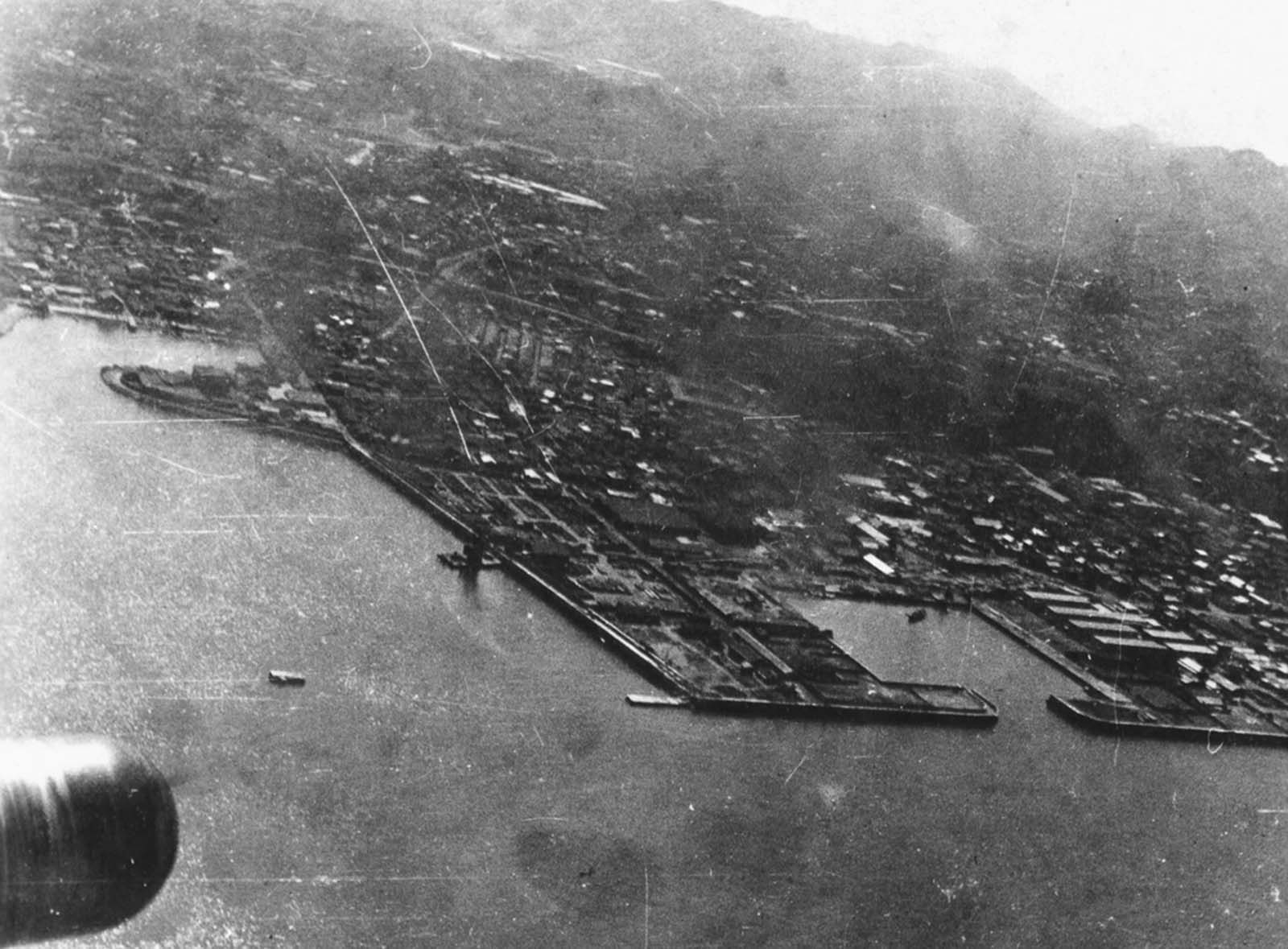
Above Tokyo, smoke rises from strikes on the Japanese mainland as the bombs dropped by Doolittle’s raiders hit their targets on April 18, 1942. Unable to land the huge aircraft back on the USS Hornet, and running low on fuel, the bombers continued westward attempting to land in a friendly area in China.

Ryozo Asano, left, spokesman for a group of diversified Japanese family enterprises called the Zaibatsu, inspects the wreckage of his steel plant in Tokyo, after the first U.S. air raid on Japan’s capital, April 18, 1942. He is accompanied by an unidentified aide. Thirteen targets were struck, including an oil tank farm, a steel mill, and an aircraft carrier under construction. Some 50 Japanese lost their lives.

Four unidentified Doolittle Raid crewmen, who bailed out over China from Aircraft #14, are escorted in a Chinese village before being reunited with other airmen in April of 1942. Most of the crew members made it to China, either crash landing, or bailing out over land. The assistance given by the Chinese to the airmen spurred the Japanese Imperial Army to carry out a retaliatory action called the Zhejiang-Jiangxi Campaign — over the course of four months, entire villages were destroyed, and an estimated 250,000 Chinese civilians were killed.

Lt. Col. James Doolittle, who led the April, 1942 air raid on Tokyo, addresses a throng of aircraft workers at the North American Aviation plant on June 1, 1942. He said that “Shangri La,” the mythical land identified by President Roosevelt as the place where the bombers came from, “is right here in this North American plant.”

The village of Lidice, Czechoslovakia, before it was burned the ground by the Germans in 1942. On May 27, 1942, a high-ranking Nazi official named Reinhard Heydrich was assassinated, and soon after, Adolf Hitler himself reportedly ordered that any village found harboring the assassins should be leveled, all male residents executed, females shipped off to concentration camps, and acceptable children given to German families. The village of Lidice, reportedly home to Czech resistance fighters, was chosen, and Hitler’s orders were carried out starting on June 10, 1942, when all 192 men over 16 years of age were executed.

A gun-coupled camera aboard a British RAF Spitfire plane made this record of a German Focke-Wulf Fw 190 fighter aircraft getting shot down in May 1942, over an unknown location.

he appalling conditions ruling on the Russian front following the thaw when the winter snows melted and resulted in widespread floods on May 23, 1942. German soldiers wade through icy water which is knee deep, somewhere in Russia.

Sergeant P. Dorzhiev, a Russian sniper who killed 181 Germans on the Leningrad front, looking through binoculars, and holding a rifle, sometime in 1942.

This photo was taken from a the body of a dead Germany officer killed in Russia, showing a German firing squad shooting Soviet civilians in the back as they sit beside their own mass grave in Babi Yar, an infamous ravine in the Ukrainian capital of Kiev, in 1942. Between 1941 and 1942, an estimated 100,000 to 150,000 Jews, Soviet prisoners, communists, gypsies, Ukrainian nationalists and civilians were executed by the Germans in Babi Yar.

Russian troops approach Moscow with German prisoners on February 10, 1942.

The bare landscape of Crimea, Ukraine, offers little protection in warfare, and German infantrymen hug the ground to escape enemy fire, on January 7, 1942.

A field loud-speaker is set up to broadcast propaganda to German soldiers, somewhere in Russia, on April 21, 1942.

The British destroyer HMS Campbeltown sits destroyed, wedged into the dock gates of Normandie dry dock at St. Nazaire in German-occupied France, on March 28, 1942. Members of the Royal Navy and British Commandos carried out an amphibious raid on the docks earlier that day, attempting to prevent the Germans from possessing such a valuable asset. The Campbeltown was packed with with delayed-action explosives, which later detonated, killing more than 300 Germans and knocking the dock out of commission.

A wounded British prisoner of war, sitting on the ground in St. Nazaire, France, after the raid in March of 1942.

U.S. troops from the 160th Infantry Regiment are seen as they disembark from a landing craft during amphibious training on Guadalcanal, Solomon Islands, in August of 1942.

Malayan soldiers intent on defending their peninsula charge forward at a Malay battle zone on February 10, 1942, before the Japanese completed their occupation of the peninsula and pushed Britons back onto Singapore Island.

Dining together after a Japanese raid in the Singapore area, on February 26, 1942. A Chinese man and his young daughter sit calmly amid the ruins eating bowls of rice.

In Singapore, women and children were evacuated from the onetime British bastion before the Japanese invasion. Here, some of the women, carrying bags and paper sacks, register before boarding a waiting ship on March 9, 1942.

Workmen clear up raid debris in Singapore on January 17, 1942, after a Japanese bombing raid on the British naval base.

The conference at which Singapore surrendered on February 15, 1942. Man seated at left, facing camera, is identified as Lieut. Gen. Tomoyuki Yamashita, the Japanese Commander. Man in right foreground, profile to camera, is identified as Lieut. Gen. A. E. Percival, British commander.

A large freighter settles slowly after being hit by Japanese bombs alongside of one of Singapore’s docks on February 12, 1942. Smoke from other struck objectives billows over the waterfront in this photo by C. Yates McDaniel, Associated Press correspondent, who was among the last to leave the besieged port on February 12. The next day his ship was bombed and he reached safety after further harrowing experience.

An American soldier stands tense in his foxhole on Bataan peninsula, in the Philippines, waiting to hurl a flaming bottle bomb at an oncoming Japanese tank, in April of 1942.
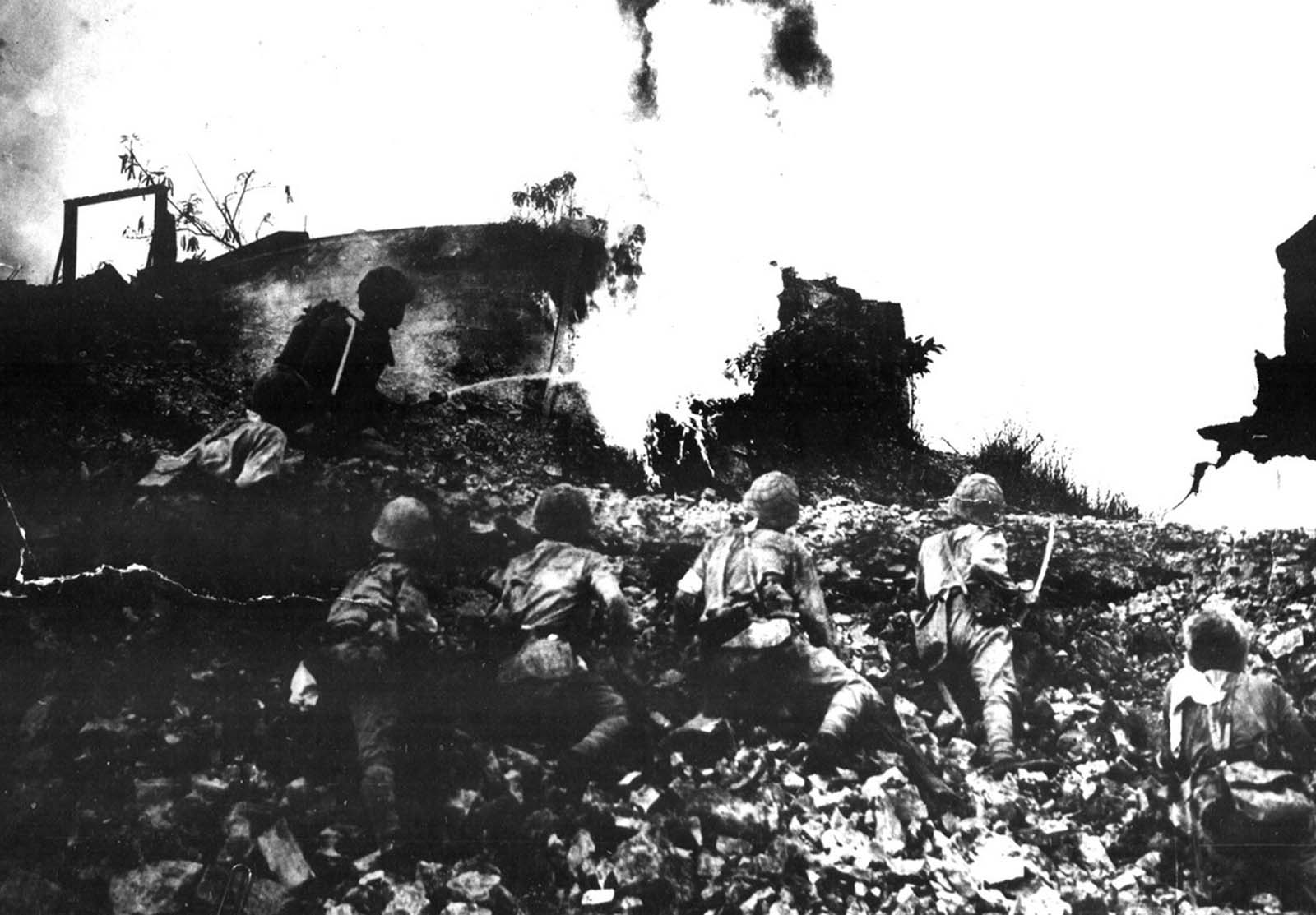
Japanese forces use flame-throwers while attacking a fortified emplacement on Corregidor Island, in the Philippines in May of 1942.

Billows of smoke from burning buildings pour over the wall which encloses Manila’s Intramuros district, sometime in 1942.

American soldiers line up as they surrender their arms to the Japanese at the naval base of Mariveles on Bataan Peninsula in the Philippines in April of 1942.

Japanese soldiers stand guard over American war prisoners just before the start of the “Bataan Death March” in 1942. This photograph was stolen from the Japanese during Japan’s three-year occupation.

American and Filipino prisoners of war captured by the Japanese are shown at the start of the Death March after the surrender of Bataan on April 9, 1942, near Mariveles in the Philippines. Starting from Mariveles on April 10, some 75,000 American and Filipino prisoners of war were force-marched to Camp O’Donnell, a new prison camp 65 miles away. The prisoners, weakened after a three-month siege, were harassed by Japanese troops for days as they marched, the slow or sick killed with bayonets or swords.

American prisoners of war carry their wounded and sick during the Bataan Death March in April of 1942. This photo was taken from the Japanese during their three year occupation of the Philippines.

These prisoners were photographed along the Bataan Death March in April of 1942. They have their hands tied behind their backs. The estimates of the number of deaths that occurred along the march vary quite a bit, but some 5,000 to 10,000 Filipino and 600 to 650 American prisoners of war died before they could reach Camp O’Donnell. Thousands more would die in poor conditions at the camp in the following weeks.

A wave breaks over the main deck of the fleet oiler USS Neosho, engulfing the hose crew, as she refuels USS Yorktown in early May 1942, shortly before the Battle of Coral Sea in the South Pacific. The Neosho was lost in that battle.

A Japanese aircraft carrier is bombed by a U.S. Navy plane in the Battle of the Coral Sea, in May of 1942. This was the first naval battle in history in which neither side’s ships ever sighted or fired directly upon the other.

Crewmen abandon ship on board the aircraft carrier USS Lexington, after the carrier was hit by Japanese torpedoes and bombs during the Battle of the Coral Sea. Note the destroyer alongside taking on survivors. The USS Phelps eventually torpedoed the stricken carrier, scuttling it and sending it to the bottom of the sea.

The USS Lexington explodes after being bombed by Japanese planes in the Battle of the Coral Sea in May of 1942. More than 200 of the carrier’s 2,951-man crew went down with the ship. While Japanese forces won a tactical battle, a number of their damaged ships were unable to participate in the upcoming pivotal Battle of Midway, which took place one month later.
